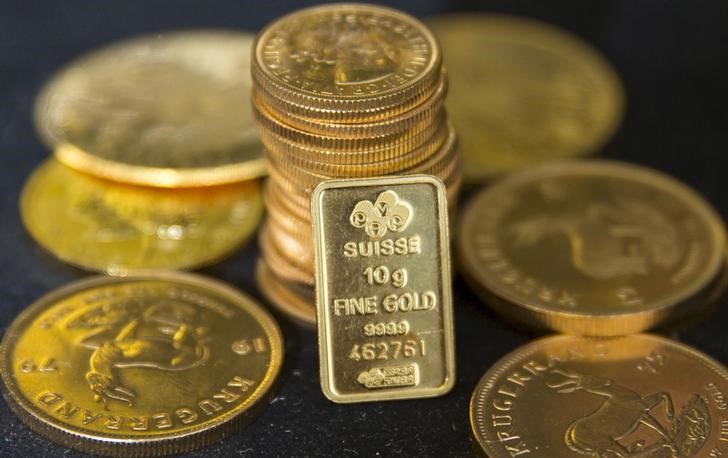By Geoffrey Smith
Investing.com -- Gold prices fell again under the pressure of forced selling on Wednesday, as fears of a global recession again swept through the world’s financial markets.
By 12:14 PM ET (1614 GMT), gold futures for delivery on the Comex exchange were down 2.2% at $1,492.60 an ounce, while spot gold was down 2.4% at $1,491.93 an ounce.
Elsewhere, silver futures were down 3.2% at $12.09 an ounce while platinum futures were down 7.6% at $614.90, as yet more carmakers shut their plants, depressing demand for catalytic convertors.
It’s not that gold is no longer in demand as a safe haven: the online shop of Degussa, Germany’s biggest trading house for gold bars and coins, is currently sold out of the vast majority of sizes of bars, up to and including 1 kilogram bars that cost over 47,000 euros ($52,000) each.
Rather, the general wipeout in other assets is continuing to stress portfolios in which gold is still only a small holding, and where it is prone to be liquidated to meet margin calls on other products.
The fall in prices on Wednesday came against a broad march higher in government bond yields in both Europe and the U.S. as markets started to price in the flood of potential bond issuance that will be needed to keep the economy going through the Covid-19 crisis.
U.S. 10-year yields rose 10 basis points to 1.10%, while German 10-year yields rose 19 basis points to -0.25%, amid suggestions from German Chancellor Angela Merkel that her government may be open to issuing debt jointly with other eurozone states as part of the region’s crisis response.
U.K. 10-year yields, meanwhile, headed sharply higher after the government pledged hundreds of billions in support to the economy on Tuesday, with Prime Minister Boris Johnson alluding to wartime fiscal policies and implying a steep rise in borrowing.
Even all that won’t be enough to stop the world tipping into recession this year, warned HIS Chief economist Nariman Behravesh. He now expects global growth of only 0.7% this year, with a steep decline in the U.S. and Europe in the second quarter.
“Growth will only return at the end of the year, Behravesh said in emailed comments.
